Europe on the Cheap in the Czech Republic
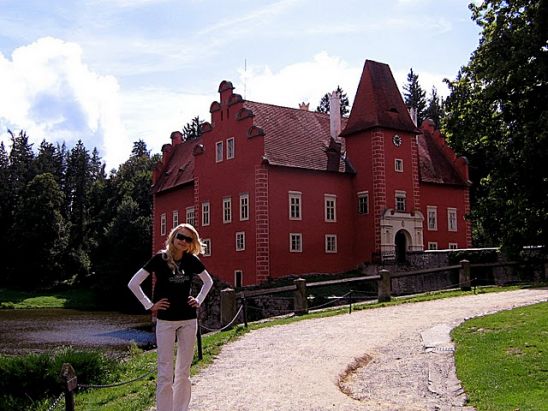
My curiosity would not let me sleep, so I departed for my study abroad program in Germany a couple of weeks early and invested my time and savings into traveling through the Czech Republic. The Czech Republic along with 27 other countries in Europe is part of the European Union. A smart traveler from U.S. will take the opportunity to explore the countries that have not yet switched to the euro and enjoy the sweet exchange rate for the Czech koruna.
Today, traveling in the Czech Republic is very different than it once was. During the Communist era the Czech people could not travel outside the former Eastern Bloc. They could only go to East Germany. The real West was fenced off with several layers of barbed wire. The border had three zones. Zone I consisted of warning signs and barbed wire. Zone II was military access-only with a double fence of barbed wire and military border patrol. Zone III was not reachable to the everyday person.
The Czech Republic, or the heart of Europe, is smaller than the state of Ohio and is home to 10 million residents.
In fact, many immigrants trying to escape while hiring smugglers lost their lives in border areas. Limited exports were allowed into highly secured and heavily patrolled border crossings. But, today the only real difference between the Czech Republic and German borders are the languages of the traffic signs. There are no gates, army, or patrol-just a plain view of the road. All that remains from the past is an empty immigration building.
The Czech Republic, or the heart of Europe, is smaller than the state of Ohio and is home to 10 million residents. In November 1989 the Velvet Revolution ended the Communist era, and shortly after that, democracy started to develop and grow. The former Czechoslovakia split into two countries: the Czech Republic and Slovakia. Many mistake these two countries as being one, even after 20 years of independence.
Many also think that the former Czechoslovakia was part of the former USSR, but that’s also a mistake. Czechoslovakia was as an independent country during the entire Communist Eastern Block era, so Czech people speak Czech, not Russian. Even though both are languages of Slavic origin, they are very distinct languages. Both languages use a different alphabet.
The capital city is Prague (PRAHA in Czech). One of the main sights is The Charles Bridge, named after The King of Bohemia and Holy Roman Emperor, Charles IV (1316-78). Historians claim that the Charles Bridge was built with sand, water, clay and tons and tons of eggs used for binding.
Europe on the Cheap in the Czech Republic
Apparently, this was a very good idea because the bridge stands strong over the Moldova River (Vltava, in Czech) despite major floods in 2007. Charles IV also founded the first European University, Prague University, as well as St. Vitus Cathedral. Today the Charles Bridge is only a tourist-walking zone with an infinite number of artists performing and selling their art and crafts all year around.
Negotiating always pays off while making purchases on the bridge. If you offer to pay with the euro, the price will go down significantly since the currency is the Czech koruna and the euro is on demand. Downtown Prague is always crowded because it is attractive, magnificent and historically rich. Unfortunately, as with many European cities, Prague is a haven for pickpockets. Make sure to carry your backpack in front of you and cross your arms over it. Keep your money in several places, as close to your body as possible and never in your back pocket.
If you see the president’s flag waving on the top of the castle, it means that the Czech president is currently in the castle. From the Prague Castle, the popular view, “the city of thousands of towers” can be seen.
One of the biggest tourist attractions is the Prague Castle, which stands nobly on the hill overseeing the entire valley of the Moldova River. If you see the president’s flag waving on the top of the castle, it means that the Czech president is currently in the castle. From the Prague Castle, the popular view, “the city of thousands of towers” can be seen.
Today, Prague is home to major market players such as Microsoft, Dell, Apple, Procter & Gamble, Johnson & Johnson, Nokia, Motorola, Ford, KIA, Nissan, Mazda, Toyota, Citroen, Renault as well as IKEA, McDonald’s, Starbucks, Harvey’s… just about anything you find in the U.S. market, along with German major market players such as VW and others.
During my time in Southern Czech Republic, I visited small castles, belvederes, churches and cathedrals, which are even common sites for cities with 25,000 residents. I did not forget to wear proudly my CSU colors. My Viking shirt represented my university on the plane and during my time in the Czech Republic.
Photo credit by Cindy.

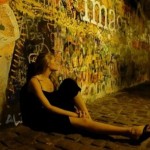


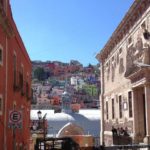

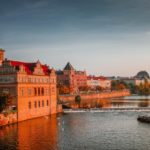

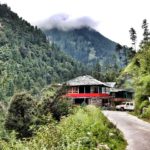
Great article Cindy. Your English has come a long way. Your homeland sounds really nice and maybe one day I will come visit from Canada. Keep up the good work. Rich. 😎